Gophers can be a gardener’s worst nightmare. These burrowing rodents are known for their voracious appetite and can cause significant damage to gardens and landscapes. Fortunately, certain plants are known to be gopher-resistant, making them excellent choices for anyone looking to protect their gardens while still maintaining aesthetic appeal.
Daffodils (Narcissus spp.)
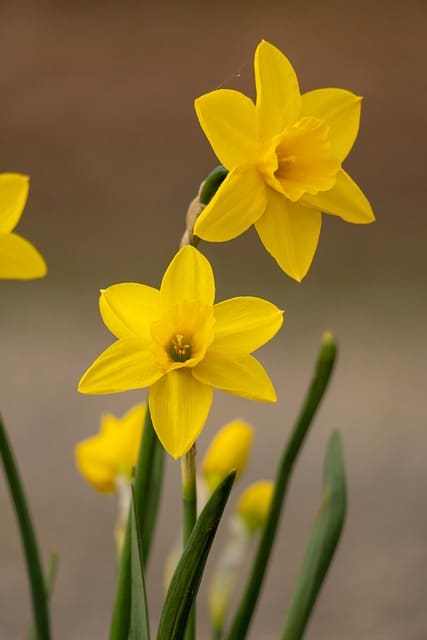
Daffodils, or Narcissus, are perennial flowers that are often celebrated for their cheerful yellow and white blooms that herald the arrival of spring. The reason behind their gopher-resistance lies in their chemical composition. Daffodils contain alkaloids that are toxic to many garden pests, including gophers. These compounds can deter gophers and even prevent them from tunneling in areas planted with these bulbs.
Moreover, daffodils thrive in a variety of soil types and light conditions, making them versatile for almost any garden. Once planted, they require minimal maintenance and can naturalize over the years, multiplying their presence and their protective qualities against hungry gophers. Additionally, their striking flowers also add beauty to your landscape, enhancing visual interest in gardens.
Crown Imperial (Fritillaria imperialis)

Crown Imperial, also known as Fritillaria imperialis, is a strikingly regal member of the fritillary family. This plant stands tall with clusters of pendulous flowers that form a crown-like appearance atop its stems. Beyond its ornamental value, the Crown Imperial is a nearly foolproof way to keep gophers at bay due to its toxins.
Growing up to four feet tall, the Crown Imperial thrives in well-drained soil and requires full sun for optimal growth. It can be planted in borders or as a standout specimen in a perennial garden. The unique shape and height of the plant not only add vertical interest to the garden but also prevent gophers from making it their next meal, as the plant’s strong scent and bitter taste are natural deterrents.
California Poppy (Eschscholzia californica)

The California Poppy is a vibrant and hardy wildflower that embodies the spirit of the California landscape. Known for its striking orange and yellow blooms, this plant is not just a native favorite—it is also gopher-resistant. The California Poppy’s ability to thrive in poor, dry soils and its resilience make it an excellent choice for gardeners looking to deter gophers naturally.
These poppies are easy to grow from seed and require minimal maintenance once established. They bloom profusely in spring and can attract pollinators like bees and butterflies, enhancing biodiversity in your garden. Additionally, their high adaptability means they can be sown in various locations, creating vibrant patches of color while keeping gophers at bay.
Lavender (Lavandula spp.)

Lavender is cherished for its delightful fragrance and stunning purple blooms. Not only does it add a Mediterranean touch to the garden, but it also acts as a natural gopher repellent. The strong scent of lavender is unpleasant for many animals, including gophers, making it a wise choice for anyone looking to protect their garden.
Lavender thrives in well-drained soils and sunny locations, making it low-maintenance once planted. Its drought tolerance is an added bonus, enabling it to survive even in arid conditions. Beyond its gopher-repelling properties, lavender attracts various beneficial insects and pollinators, enhancing your garden’s ecosystem while providing fragrant sachets for indoor use.
Rosemary (Rosmarinus officinalis)

Rosemary is a perennial herb that not only enhances culinary dishes with its aromatic leaves but also possesses gopher-repelling properties. Its strong scent is off-putting to many animals, including gophers. This robust plant thrives in sunny, well-drained gardens, ensuring minimal maintenance and a long lifespan.
In addition to being gopher-resistant, rosemary can be used fresh or dried in cooking, providing dual benefits for gardeners. Its woody stature and blue flowers in spring add timeless beauty to garden beds, while its adaptability makes it suitable for both formal hedges and informal gardens. Rosemary also attracts beneficial pollinators, further enriching the garden’s biodiversity.
Yarrow (Achillea spp.)

Yarrow is a perennial herb characterized by its feathery leaves and clusters of small flowers, often in shades of yellow, white, and pink. This hardy plant is known for its resilience and adaptability, making it an excellent addition to a gopher-resistant garden. Yarrow has a strong aroma that is unappealing to gophers, providing a natural deterrent.
Beyond its pest-repelling characteristics, yarrow is celebrated for its medicinal properties and ability to attract pollinators. This perennial is perfect for creating wildflower gardens and thrives in poor, dry soils, making it a cost-effective choice for gardeners. Its drought resistance and ability to spread make it an ideal companion plant, contributing both to garden beauty and pest control.
Penstemon (Penstemon spp.)
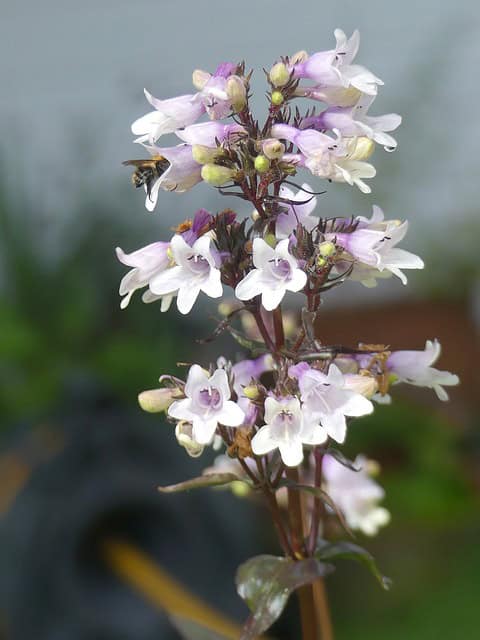 Penstemon, commonly known as beardtongue, encompasses a range of flowering plants characterized by their tubular flowers in vibrant hues, including purple, pink, and red. These plants thrive in dry conditions and are largely resistant to gophers due to their tough foliage and bitter compounds.
Penstemon, commonly known as beardtongue, encompasses a range of flowering plants characterized by their tubular flowers in vibrant hues, including purple, pink, and red. These plants thrive in dry conditions and are largely resistant to gophers due to their tough foliage and bitter compounds.
During the blooming season, penstemon is an essential nectar source for hummingbirds and butterflies, enhancing garden aesthetics and biodiversity. They prefer full sun and are best suited for well-drained soils. With their stunning flowers and robust nature, penstemons not only brighten garden spaces but also deter gophers effectively.
Russian Sage (Perovskia atriplicifolia)
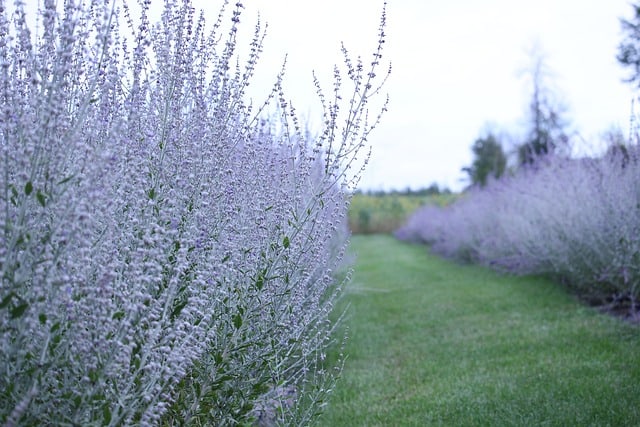
Russian Sage is known for its silvery foliage and tall spikes of lavender-blue flowers that bloom in late summer. This drought-tolerant perennial is a favorite in xeriscaping and attracts pollinators while deterring gophers. Its scent and tough leaves form a barrier that keeps gophers and other pests at bay.
This plant prefers full sun and well-draining soil, making it relatively easy to care for once established. The airy, wispy appearance of Russian Sage adds a light, ethereal quality to garden designs and is often used in mixed perennial borders or as a striking focal point. Its resilience in adverse conditions makes it a smart choice for gopher-resistant gardening.
Catmint (Nepeta spp.)

Catmint, also known as Nepeta, is a perennial herb that produces clusters of bluish-purple flowers and has a pleasant aroma. Known for its hardiness and resilience against drought, catmint is often ignored by gophers, providing a natural shield for gardens. The strong smell can deter gophers while attracting pollinators, enhancing the overall garden ecosystem.
Catmint thrives in well-drained soil and is ideal for full sun to partial shade, requiring minimal maintenance. Its flowering period extends from late spring to early summer, providing interest in gardens during pivotal blooming seasons. This perennial is particularly effective when planted in mass or used as a border plant, creating a vibrant display.
Agapanthus (Agapanthus spp.)

Agapanthus, commonly referred to as African Lily or Lily of the Nile, is known for its striking blue or white flower clusters that bloom atop tall stems. This plant thrives in sunny areas with well-drained soil and is resistant to gopher browsing due to its robust structure and sap that is typically unappealing to rodents.
As a perennial, Agapanthus can form clumps and should be divided every few years to maintain vigor. Its drought-tolerant nature makes it a thoughtful choice for sustainable gardening. The dramatic blooms, often used in borders or as specimen plants, provide not only beauty but also a protective environment against gophers.
Shasta Daisy (Leucanthemum x superbum)
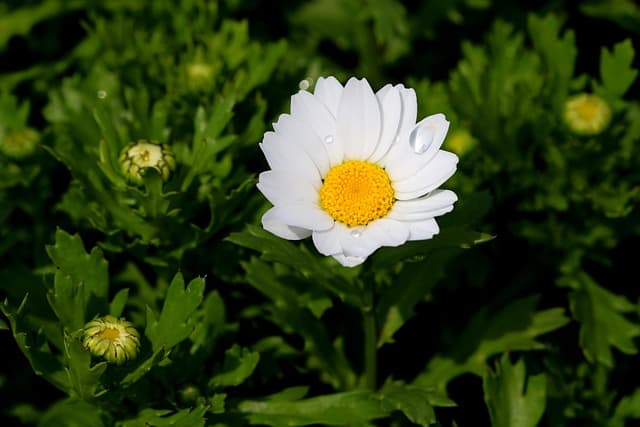
Shasta Daisy, a hybrid derived from several daisy species, is beloved for its large white blooms with yellow centers. This cheerful perennial is resilient and gopher-resistant, thanks to its sturdy structure and foliage that many garden pests tend to avoid.
Shasta Daisies flourish in full sun and can withstand various soil types, making them a versatile choice for any garden. Additionally, they are relatively low-maintenance and long-blooming, enhancing any garden with their bright, carefree appearance. When planted in masses, they can create spectacular displays while providing a barrier against gophers and other pests.
Lamb’s Ear (Stachys byzantina)
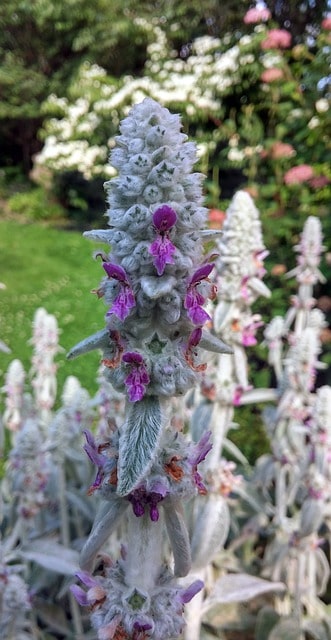
Lamb’s Ear is a perennial ground cover characterized by its soft, velvety leaves that resemble a lamb’s ear. Known for its resilience, this plant is distinctly gopher-resistant due to its fuzzy leaves and unpalatable taste. It forms a low-growing mat that can shield the soil and prevent gopher infiltration.
This perennial prefers sunny to partial shade locations and thrives in well-draining soil. Its drought-tolerant nature means it can flourish with minimal upkeep, making it suitable for low-maintenance gardens. Besides repelling gophers, Lamb’s Ear attracts beneficial insects and adds a tactile element to garden landscapes, enhancing the sensory experience within the garden setting.
Coreopsis (Coreopsis spp.)
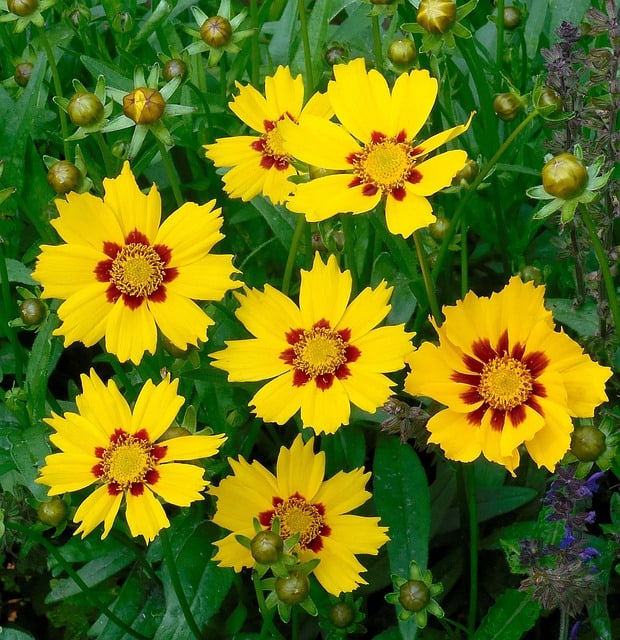
Coreopsis, often referred to as tickseed, features cheerful, daisy-like blooms in shades of yellow, pink, and red. Its vibrant flowers not only add lively color to gardens but also repel gophers due to its aggressive growth and bitter taste. Coreopsis is a resilient perennial that thrives in poor soils, making it ideal for gardeners seeking lower-maintenance plants.
This versatile plant is easily grown from seed or transplants and does well in full sun. With a long blooming period, coreopsis attracts a variety of pollinators and beneficial insects, contributing to biodiversity. When used in drifts or as edging, their bold colors create striking contrasts that can elevate the beauty of any landscape while avoiding gopher damage.
Society Garlic (Tulbaghia violacea)

Society Garlic is an ornamental perennial known for its ornamental purple blooms and garlic-like aroma, which deters many garden pests, including gophers. Its strong scent makes it an excellent choice for a gopher-resistant garden, and its lush foliage can help fill in spaces between other plants.
Thriving in full sun to partial shade, Society Garlic is adaptable to different soil types as long as they have good drainage. Once established, it requires minimal maintenance, making it a popular choice for busy gardeners. Its long-lasting blooms add color and interest to garden designs, and the plant can even be used for culinary purposes, offering versatility for gardeners.
Mexican Marigold (Tagetes lemmonii)
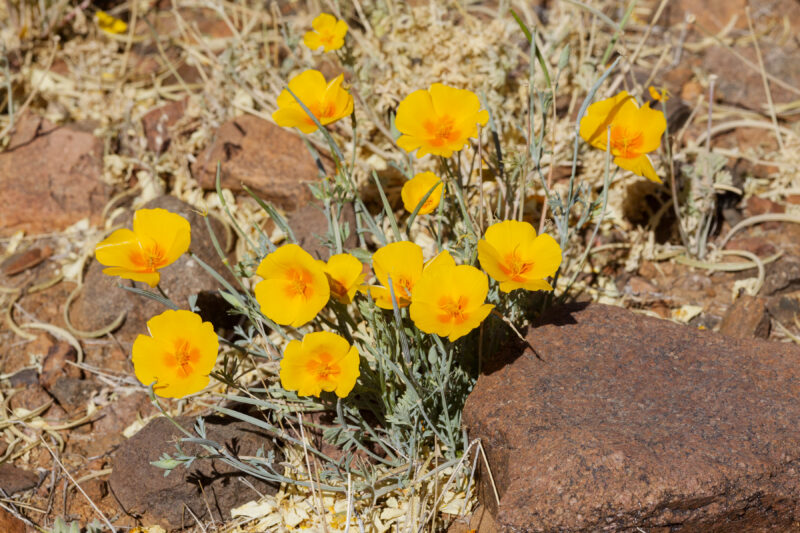
Mexican Marigold, also known as Tagetes lemmonii, is a perennial herb that features striking, aromatic foliage and vibrant yellow flowers. Its strong scent is known to repel various pests, including gophers, making it a valuable addition to any garden concerned with rodent damage.
This hardy plant prefers well-draining soils and full sunlight, and its tolerance for drought makes it an excellent choice for low-water gardens. Aside from its pest-repelling qualities, Mexican Marigold can also attract beneficial pollinators, enriching the local ecosystem. Its delightful colors and fragrances also contribute to the aesthetic appeal of your garden.
Red Hot Poker (Kniphofia spp.)
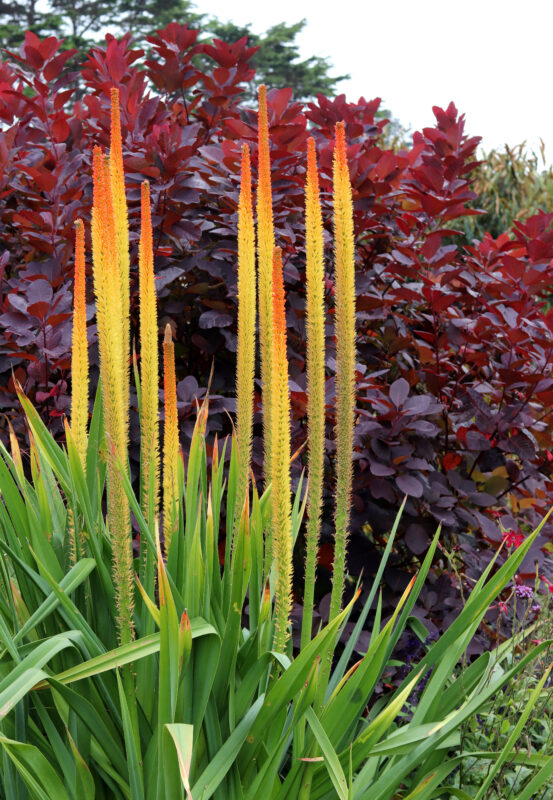
Red Hot Poker, or Kniphofia, is known for its unique, torch-like flower spikes that bloom in vibrant hues of red, orange, and yellow. This striking perennial is not only an eye-catching landscape feature but also gopher-resistant. Its tough structure and strong substances make it an effective deterrent for these burrowing rodents.
Red Hot Poker prefers sunny, well-drained locations and is drought-tolerant once established. These plants can create an exotic flair in gardens due to their unique shape and vivid colors. With proper care, they can thrive for several years, making them a valuable addition to gardens looking to combine beauty with gopher resistance.
Sea Holly (Eryngium spp.)
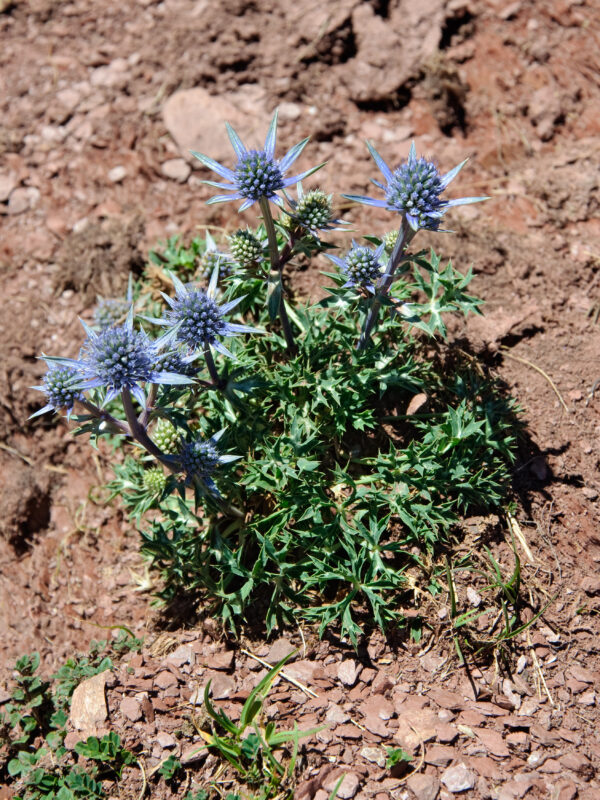
Sea Holly, characterized by its spiky, globe-like flowers and silvery-blue foliage, is a striking addition to any garden. This perennial plant is not only visually interesting but also gopher-resistant, as its tough, prickly leaves dissuade rodents from making it their snack.
Sea Holly thrives in sunny, well-drained conditions, making it a low-demand option for gardeners. Its unique visual appeal makes it a great choice for ornamental gardens as it attracts pollinators and adds texture to floral arrangements. Moreover, this plant will tolerate salty conditions, making it an excellent choice for coastal gardens.
Salvia (Salvia spp.)
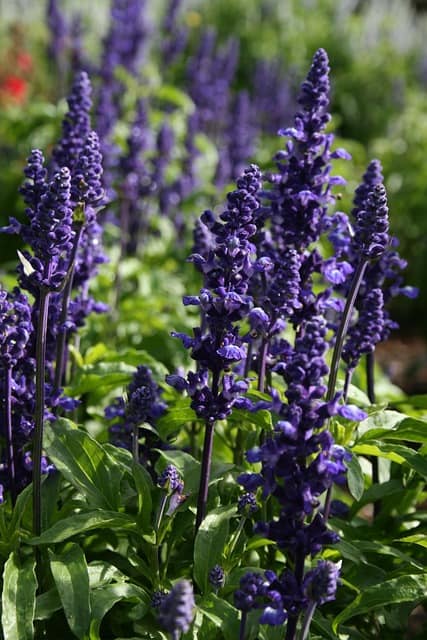
Salvia is a diverse genus of plants that includes multiple species, many of which are known for their vibrant flowers and aromatic leaves. Various salvia species are highly resistant to gophers due to their tough foliage and unappealing scent. This makes them a fantastic addition to any gopher-resistant garden.
Salvia prefers full sun and well-drained soil, and once established, many varieties are drought-tolerant. With blooming seasons that can last all summer, salvias provide continuous interest in the garden. These plants also attract hummingbirds and butterflies, enriching your garden’s biodiversity while offering a beautiful display.
Gaillardia (Gaillardia spp.)

Gaillardia, commonly known as blanket flower, is celebrated for its cheerful, daisy-like blooms that come in shades of red, yellow, and orange. This resilient perennial is known to be gopher-resistant due to its robust structure and its ability to thrive in poor soils, ensuring that it can flourish even in challenging conditions.
Preferring full sun, Gaillardia is incredibly drought-tolerant once established, making it low-maintenance. Its long blooming period can outlast many garden plants, providing a splash of color throughout the growing season. Additionally, its nectar-rich flowers attract a multitude of pollinators, enhancing the overall health and vibrancy of your garden.
Lantana (Lantana camara)
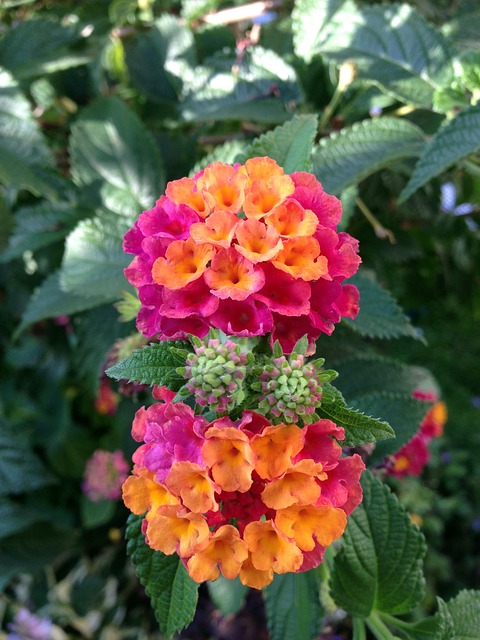
Lantana is a popular flowering shrub known for its clusters of small, colorful blooms that attract pollinators and butterflies. This hardy plant, which can be grown as an annual or perennial depending on the climate, is often overlooked as a gopher-resistant option. The tough foliage and unpalatable taste can deter these rodents while providing a vibrant display.
Lantana thrives in full sun and is highly tolerant of drought conditions, making it a robust addition to gardens. Its ability to fill in gaps and create lush, colorful beds ensures beauty all season long. Furthermore, Lantana can be used effectively to form borders or in mixed beds, serving as both a gopher deterrent and a visual delight.
Artemisia (Artemisia spp.)

Artemisia, known for its aromatic foliage and unique gray-green color, offers a distinct artistic flair to gardens. This diverse group includes plants like wormwood and sagebrush, which are notorious for repelling pests, including gophers. The strong scents emitted from the leaves are unappealing, and their tough texture can dissuade rodents from feasting.
These plants prefer full sun and are quite drought-tolerant, requiring minimal maintenance. Their varied textures add depth and contrast to floral landscapes, making them an excellent complementary choice for mixed gardens. With their pest-repelling capabilities and unique visual qualities, Artemisia can enhance both the aesthetic and functional aspects of your garden.
Mexican Sage (Salvia leucantha)
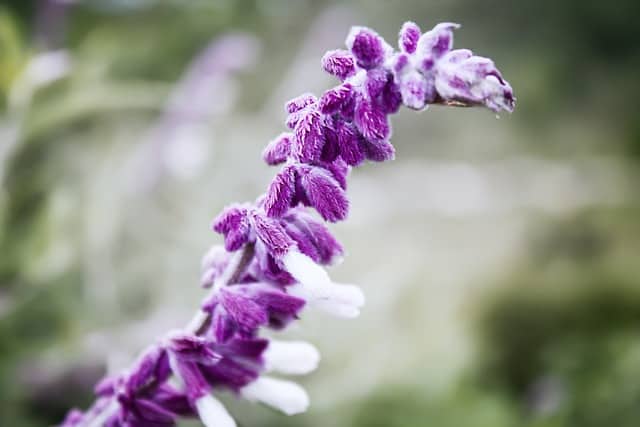
Mexican Sage is an ornamental perennial that produces long spikes adorned with soft, velvety flowers in shades of purple and lavender. Not only does it attract butterflies and hummingbirds, but it is also gopher-resistant. The robust foliage and aromatic scent act as natural repellents, making it an effective choice for gardens plagued by rodents.
This plant thrives in full sunlight and well-drained soil, establishing itself with little maintenance once rooted. Its long blooming season can last until frost, providing continuous color in the garden. Whether used as a border plant or in mass displays, Mexican Sage can beautify your landscape while ensuring protection against gophers.
Thyme (Thymus spp.)
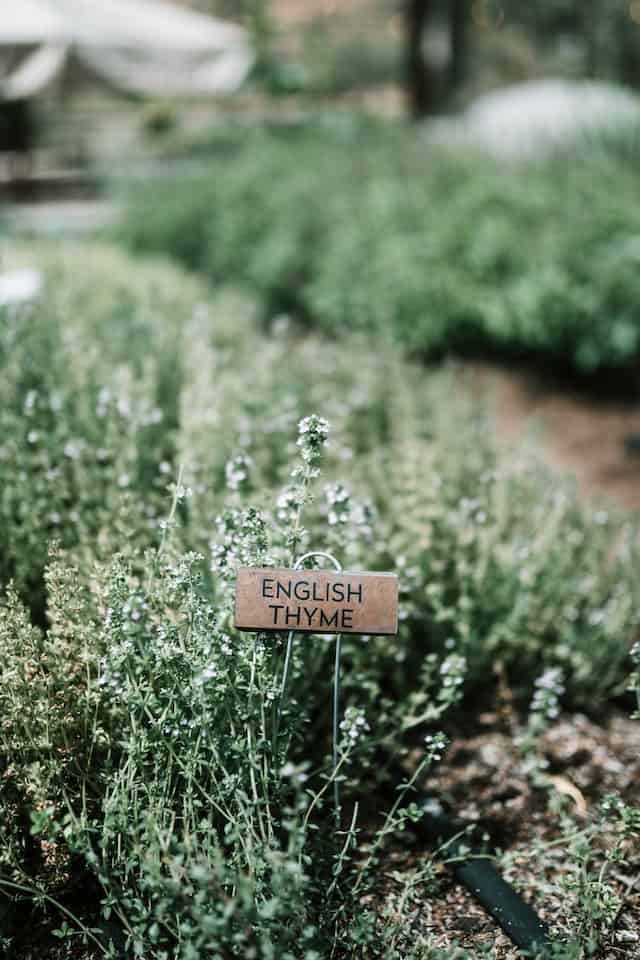
Thyme is a low-growing herb known for its culinary uses and aromatic leaves. It is also surprisingly gopher-resistant. Its pungent scent and tough leaves are unappealing to many garden pests, making it a smart choice for gardeners aiming for pest management while enjoying flavorful herbs.
Thyme thrives in well-drained soil with full sun conditions but is adaptable enough to grow in various settings. This resilient herb is drought-tolerant once established and offers a wealth of culinary benefits. The compact growth habit makes it perfect as a ground cover or in rock gardens, enhancing both the functionality and beauty of your garden.





